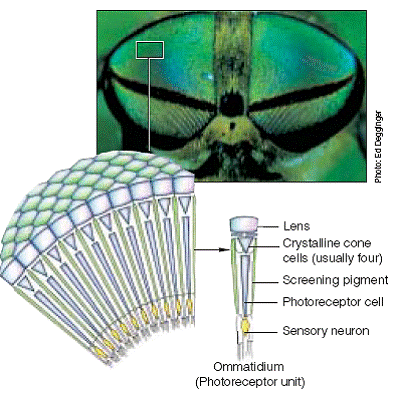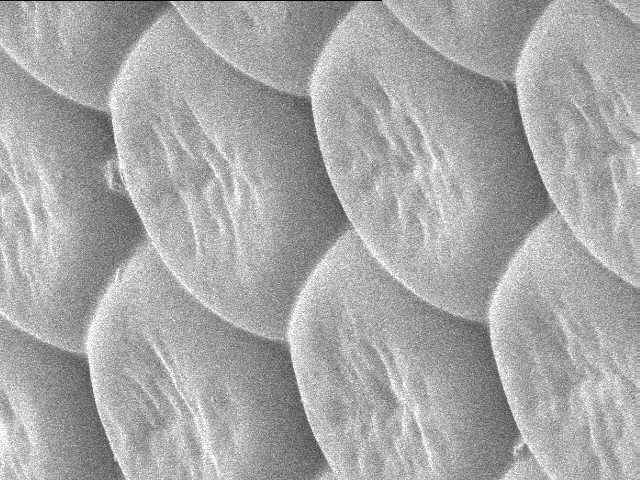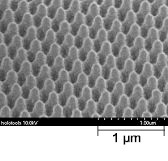|
Moth-Eye Gratings
The moth-eye disperses light across its lens as a
form of camouflage. Most moths are nocturnal.
They rely on their ability to look like their surroundings to hide. The eye itself dampens light
to eliminate a reflection of light that would give away their
position.
However, because most of the moths are nocturnal, they need light to be easily let
into their eye. The moth-eye grid allows for greater photon reception - meaning
it makes the image clearer. Moths don’t have eye lids on their compound eyes.
They rely on the grids in their eyes to allow them to be active during the night
and rest during the day. The light coming into their eye hits
the grid and is dispersed
across the area of the surface. When a narrow beam of light enters the grid, it
is dispersed over a large area without decreasing the amount of light that passes
through it. This dispersion of light makes it less intense.
It is then let into the eye.
 |

moth's eye magnified 5,252 times |
|
|
|
Shown above is the compound eye of the average deerfly. The light first enters the
lens and then one of four crystalline cone cells which focus the light onto a photoreceptor
cell. The crystalline cones act as magnifying glasses making the image sharper.
The light is then passed to the ommatidium, or the receptor unit, which sends the
image to the brain.
This "fly-eye
grid" is an efficient reflector of white light at up to 60 degrees, and is
a relatively good
anti-reflector at angles greater than 60 degrees. The grid would be particularly
useful on a curved surface1rather than a flat surface. On the curved surface,
it would increase the transmission of incident light through the cornea of the fly,
or any other curved transparent surface. The eyes of the Lepidoptera (insects with
scaled wings such as butterflies and moths) work extremely well at 10 degrees to
the surface normal. If there was a surface at 45 degrees, the moth-eye
grid would work quite well. It is perfectly functional from
35-55 degrees. The moth eye is not strictly limited
to the 35-55 degrees, but the 35-55 degrees are the best antireflective
section when dealing with an intense light condition. These moth-eye
applications can be
etched into a surface using a embossing feature, or a stamping process.
For example, if light is coming from a source of 50 degrees, and using the same 45 degree
surface from before, the light would be greatly deflected and dispersed across the
surface.
This difference would be similar to staring at an LED light
displaying 100 lumens of light and
a candle displaying 100 lumens of light. To the eye, the LED is stronger because
the same amount of light is emitted from a smaller area. The candle
seems less intense because it is dispersed over a wider area. This
is how the moth-eye works. When light enters a moth-eye
grid it is dispersed across the grid and passes through it to the other side. The other side of the grid is
still receiving the same amount of light, but over a larger area.
Shown below is a moth-eye application under a microscope.
We investigated moth-eye gratings as one of our technical applications for our
National Critical Technology in Component One
|
 Product
Product
 Liquid Crystals
Liquid Crystals Moth-eye Gratings
Moth-eye Gratings Photonic Crystals
Photonic Crystals Laws
Laws
 Manufacturing
Manufacturing


